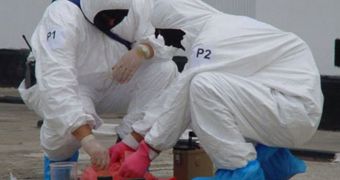Regulators in the European Union approved the founding of a new, high-tech, state-of-the-art nuclear research laboratory in Germany. The goal of the facility will be to promote the Union's ability to characterize and accurately analyze minute samples of nuclear materials. The effort is being conducted in the name of safeguarding security, and to promote non-proliferation activities worldwide. The test facility will be set up by a collaboration of the European Commission's Joint Research Center (JRC), and the European Atomic Energy Community (Euratom), officials have recently announced at the annual meeting of the American Association for the Advancement of Science, held in San Diego, California.
The lab will be constructed in Karlsruhe, Germany, and it is planned to house the EU's sole large geometry secondary ion mass spectrometer (LG-SIMS). This scientific instrument will be used to boost the speed and accuracy of nuclear detection, eliminating many of the false positive, or false negative, results that current detection and analysis methods provide. The EU plays a critical international role in nuclear non-proliferation, especially through the JRC Institute for Transuranium Elements (ITU). The facility, which owns a standard SIMS device, has been analyzing samples for the International Atomic Energy Agency (IAEA) for many years.
“The rationale for particle analysis is almost so simple it's brilliant. The idea is that whatever human activity you have, dust will be left behind. And in that dust you will find traces of activities going on in a given installation,” ITU expert Klaus Lutzenkirchen explains. At this point, international law prevents UN or IAEA inspectors from conducting verifications in countries without those nations' governments consenting. But nuclear detection can also be based on traces that are left behind by processes involving nuclear energy-related materials. Minute traces remain in the dust and soil at locations where such work was conducted, and the new LG-SIMS device will be extremely apt at detecting them.
“The challenge is that the concentrations of uranium and plutonium in these materials range by more than a factor of a hundred million. You have to be able to develop techniques to not only detect the presence of uranium, but to be able to measure isotope ratios, fissile properties, and to understand what type of grains carry these isotope signatures,” Ian Hutcheon, who is a scientist at the US Department of Energy's (DOE) Lawrence Livermore National Laboratory, in California, explains. He is also the LLNL Chemical Sciences Division's group leader for chemical and isotopic signatures, Chemistry World reports.

 14 DAY TRIAL //
14 DAY TRIAL //